In today’s digital-first world, websites are no longer just online brochures—they are powerful platforms for business, communication, and services. With this growing reliance on the web, security has become more critical than ever. A single vulnerability in a website can lead to severe consequences: data breaches, financial loss, brand damage, and even legal issues.
As a developer, understanding web development security is no longer optional; it’s a necessity. Security should be considered at every stage of development, from planning and coding to deployment and maintenance. This comprehensive guide will walk you through the security essentials every developer should know to build safer, more reliable web applications.
Why Web Security Matters
-
Rising Cyber Threats
Cyberattacks are on the rise, with hackers constantly finding new ways to exploit vulnerabilities. From phishing to SQL injection, the threat landscape is vast and evolving. -
Data Protection Regulations
Laws like GDPR, HIPAA, and CCPA mandate strict data protection requirements. Failing to secure user data can lead to hefty penalties. -
User Trust and Brand Reputation
A security breach damages user trust, which can take years to rebuild. A secure website enhances credibility and boosts customer confidence. -
Business Continuity
Downtime due to cyberattacks can cost businesses millions. Security ensures websites stay functional and resilient.
Key Web Development Security Essentials
1. Secure Authentication and Authorization
Authentication (verifying who the user is) and authorization (deciding what they can access) are fundamental.
-
Use multi-factor authentication (MFA) for added security.
-
Always hash and salt passwords with strong algorithms like bcrypt or Argon2.
-
Implement role-based access control (RBAC) to limit privileges.
-
Avoid hardcoding API keys or credentials in the codebase.
2. HTTPS and SSL/TLS Encryption
-
Always use HTTPS by installing an SSL/TLS certificate.
-
Redirect HTTP traffic to HTTPS.
-
Use HSTS (HTTP Strict Transport Security) headers to prevent downgrade attacks.
3. Input Validation and Sanitization
User input is the primary attack vector. If left unchecked, it can lead to SQL injection, XSS, and more.
-
Validate inputs both on the client and server sides.
-
Use prepared statements and parameterized queries.
-
Escape output data when displaying user input.
-
Use libraries to sanitize HTML and prevent XSS.
4. Cross-Site Scripting (XSS) Prevention
XSS allows attackers to inject malicious scripts into a web page.
-
Encode user inputs before rendering them.
-
Implement Content Security Policy (CSP) headers.
-
Avoid
innerHTMLin JavaScript—use safer methods liketextContent.
5. Cross-Site Request Forgery (CSRF) Protection
CSRF tricks users into performing actions they didn’t intend to.
-
Use CSRF tokens in forms and requests.
-
Check
RefererandOriginheaders. -
Implement SameSite cookies for better protection.
6. SQL Injection Defense
SQL Injection is one of the oldest and most dangerous vulnerabilities.
-
Use prepared statements instead of concatenated queries.
-
Limit database permissions for the application user.
-
Regularly test queries with penetration tools.
7. Secure Session Management
Sessions maintain user state, but if compromised, attackers can impersonate users.
-
Store sessions securely with HttpOnly and Secure flags.
-
Use short session timeouts.
-
Regenerate session IDs after login.
-
Avoid storing sensitive information directly in sessions.
8. File Upload Security
Allowing users to upload files can expose servers to malware.
-
Validate file extensions and MIME types.
-
Store uploaded files outside the webroot.
-
Rename files to avoid conflicts and execution risks.
-
Use virus scanning tools on uploaded files.
9. Error Handling and Logging
Poor error handling can leak sensitive information to attackers.
-
Display generic error messages to users.
-
Log detailed errors for internal debugging only.
-
Monitor logs regularly to detect suspicious activity.
10. Secure Coding Practices
-
Never trust user input—always validate.
-
Keep dependencies updated and remove unused ones.
-
Use static code analysis tools to catch vulnerabilities.
-
Apply the principle of least privilege in code and infrastructure.
11. Security Testing and Monitoring
-
Conduct regular penetration testing and vulnerability scanning.
-
Use Web Application Firewalls (WAFs) to filter malicious traffic.
-
Automate scans with tools like OWASP ZAP or Burp Suite.
-
Monitor server logs and set alerts for unusual activity.
12. Data Encryption at Rest and in Transit
-
Encrypt sensitive data in databases using AES-256 or similar.
-
Never store plaintext passwords.
-
Use secure key management systems.
13. API Security
Modern web apps rely heavily on APIs, which need equal protection.
-
Use rate limiting to prevent abuse.
-
Require authentication and authorization for all endpoints.
-
Validate and sanitize API inputs.
-
Avoid exposing sensitive error messages.
14. Content Security Policy (CSP) Implementation
CSP prevents injection attacks by defining allowed content sources.
-
Whitelist trusted domains for scripts, images, and styles.
-
Disallow inline JavaScript where possible.
-
Monitor CSP violation reports.
15. Regular Updates and Patch Management
-
Keep your CMS, plugins, frameworks, and libraries updated.
-
Apply security patches as soon as they are released.
-
Remove unused components that may introduce vulnerabilities.
OWASP Top 10 – A Developer’s Must-Know List
The OWASP (Open Web Application Security Project) Top 10 is a widely recognized list of the most critical web application security risks. Every developer should be familiar with it:
-
Broken Access Control
-
Cryptographic Failures
-
Injection (SQL, NoSQL, etc.)
-
Insecure Design
-
Security Misconfiguration
-
Vulnerable and Outdated Components
-
Identification and Authentication Failures
-
Software and Data Integrity Failures
-
Security Logging and Monitoring Failures
-
Server-Side Request Forgery (SSRF)
By addressing these, developers can eliminate most common vulnerabilities.
Best Practices for Developers
-
Shift Left Security: Integrate security into the development lifecycle from the start.
-
Use Secure Frameworks: Choose frameworks with built-in security features.
-
Educate Yourself: Stay updated with security blogs, forums, and certifications.
-
Collaborate with Security Teams: Developers and security experts should work together to minimize risks.
-
Automate Security Checks: Include vulnerability scanning in CI/CD pipelines.
Real-World Consequences of Poor Security
-
Yahoo Data Breach (2013–2014): Over 3 billion accounts compromised due to poor encryption.
-
Equifax Breach (2017): Failure to patch a known vulnerability led to exposure of sensitive data of 147 million people.
-
Capital One (2019): A misconfigured firewall allowed attackers to steal credit application data.
These examples highlight that even large organizations are vulnerable if security is overlooked.
Conclusion
Web development security isn’t an afterthought—it’s a core responsibility of every developer. By implementing secure coding practices, staying updated on vulnerabilities, and following frameworks like the OWASP Top 10, developers can significantly reduce risks and protect both their users and organizations.
The digital world is fast-paced, and attackers evolve quickly. To stay ahead, developers must continuously learn, test, and improve their security strategies. Remember: a secure website isn’t just about protecting data—it’s about preserving trust, reputation, and the future of your online presence.
FAQs
Why is web development security important?
Web security protects user data, prevents cyberattacks, and ensures website availability. Without it, businesses risk financial loss, reputational damage, and legal consequences.
What is the OWASP Top 10?
The OWASP Top 10 is a list of the most critical web application security risks, widely regarded as a standard reference for developers and organizations.
How can developers prevent SQL injection?
Developers should use prepared statements, parameterized queries, and ORM frameworks to prevent SQL injection attacks.
What is the role of HTTPS in security?
HTTPS encrypts communication between the browser and server, preventing attackers from intercepting sensitive data like passwords and credit card numbers.
How often should security testing be performed?
Security testing should be performed regularly—ideally integrated into CI/CD pipelines, as well as after major updates or feature releases.

